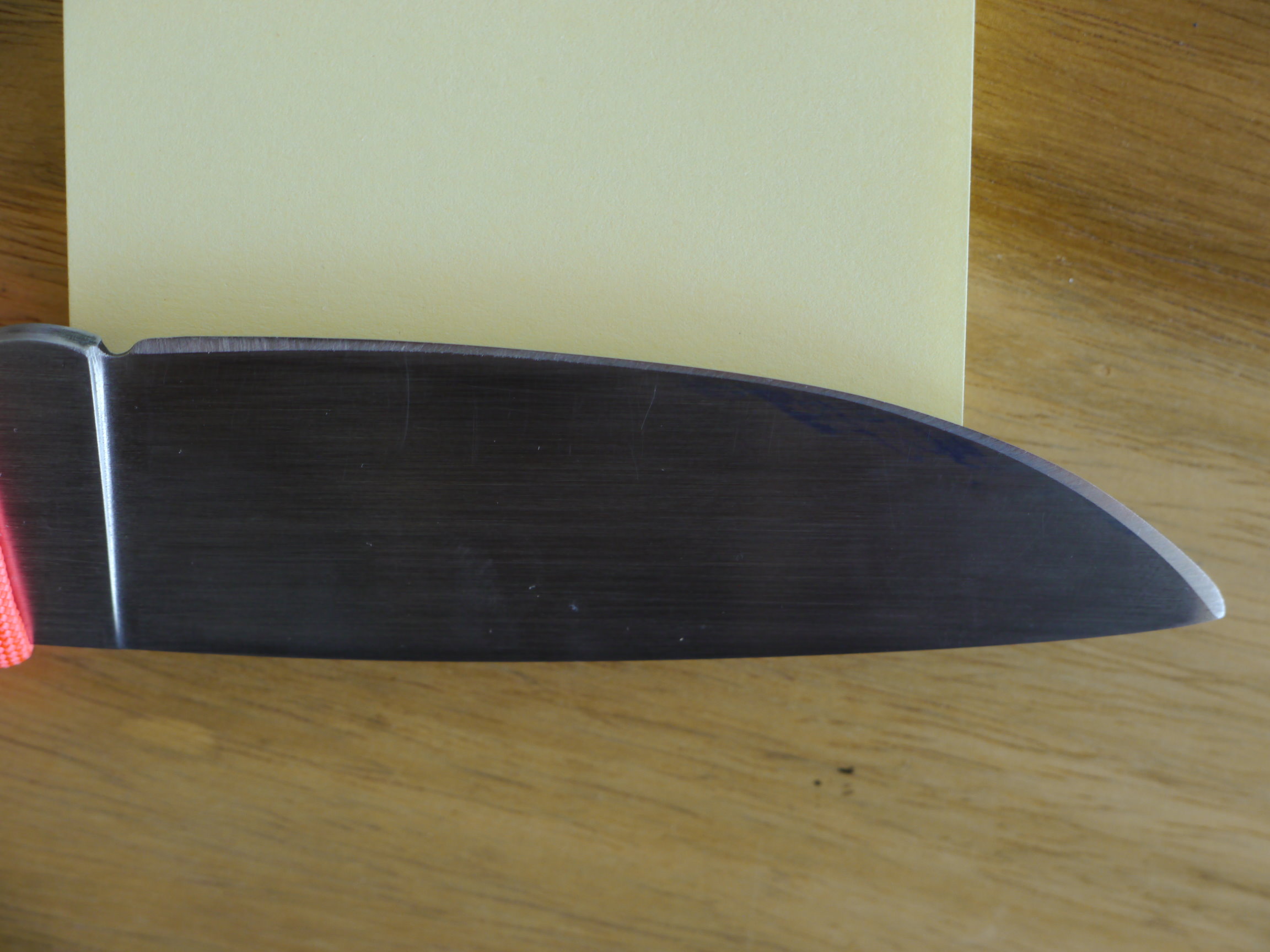Mark: Organic’s proposal is the best approach and I’m sure there’s a blade position that will improve things. There might even be an answer that clamps the blade in more than one position.
However, there might not be an answer because the photo shows a case of a blade that has been ground unevenly by the manufacturer. The center of the blade appears to be thinner than the tip or heel section. If you have a micrometer or a good caliper, you can check the width of the bevel at the point showing the greatest variability.
I check bevel width by first setting my micrometer very nearly closed. Then I rest the blade with the edge down in the opening of the mic’. Then slowly open the micrometer until you can see the bevel shoulders of the blade drop into the opening. That will be your shoulder width. Take readings between the heel, the tip and the center (narrowest point of the bevel). You’ll see that the width of the bevel shoulders (the thickness of the blade) is lowest at the narrowest part of the bevel.
Unfortunately, there’s not much you can do about this case, and for what it’s worth, the thinnest section will cut the best. If you can’t live with the uneven bevels, you could have the blade reground, to match the thick sections with the thinnest. Another job for Razor Edge Josh, master of regrinds.
3 users thanked author for this post.
